For the purpose of this tutorial, we create a OLE DB Source and a Devart Salesforce Destination.
In the Control Flow tab, go to the Toolbox docking window, in the Control Flow Items list select Data Flow Task and drag it to the design area. The Data Flow Task is created.
Switch to the Data Flow tab, go to the Toolbox docking window, in the Data Flow Sources list select OLE DB Source and drag it to the design area.
Then, go to the Toolbox docking window again, and in the Data Flow Destinations list select Devart Salesforce Destination and drag it to the design area.
Connect the two data flow objects with a Data Flow path.
For this example we need two connections - one for the OLE DB Source, the other one for the Devart Salesforce Destination. To create a connection for Salesforce, do the following:
- Right-click in the Connection Managers pane and select New Connection
from the context menu. The Add SSIS Connection Manager dialog box is displayed:
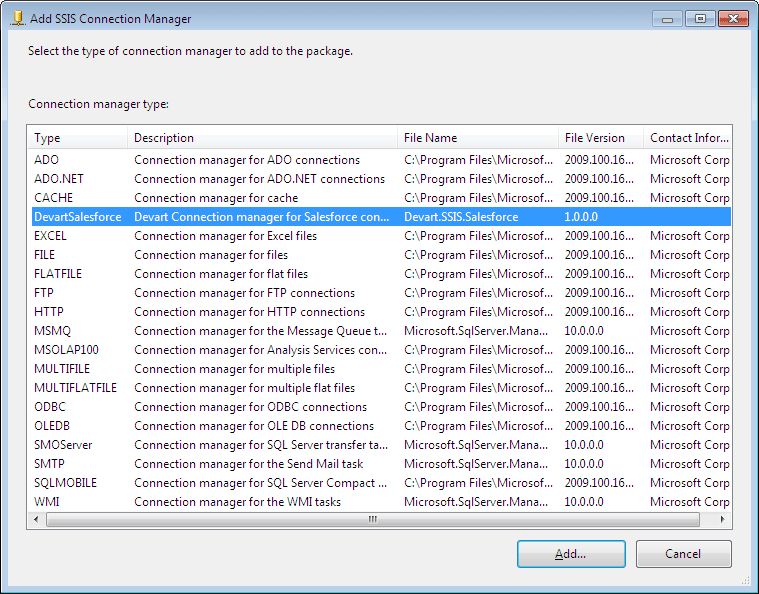
- In the Connection manager type list select DevartSalesforce and
click Add. The General tab of the Salesforce Connection Manager Editor
dialog box is displayed:
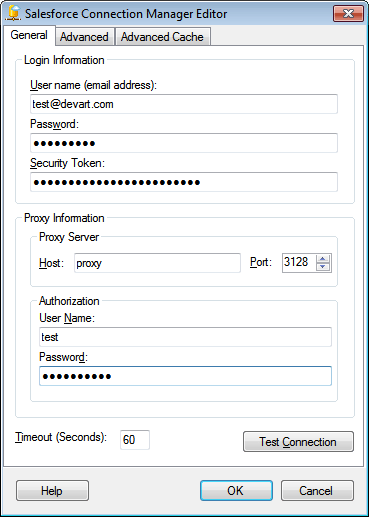
- In the Login Information area, specify the User name (email address) and Password you have specified, and Security Token you have received when registering at the Salesforce website; in the Proxy Information area, specify the required Host and Port; in the Authorization area, specify the User name and Password and click OK.
The connection for the Salesforce database is now created.
To create a connection for the OLE DB Source we do the following:
- Right-click in the Connection Managers pane and select New Connection from the context menu. The Add SSIS Connection Manager dialog box is displayed.
- In the Connection manager type list select OLEDB and click Add.
The Configure OLE DB Connection Manager dialog box is displayed. Click New.
The Connection Manager dialog box is displayed; fill in the connection settings
as required, e.g. as follows:
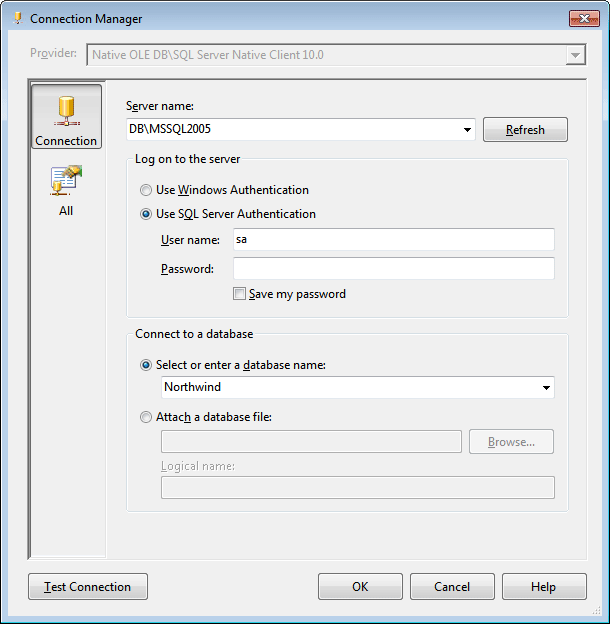
Click OK.
- The Configure OLE DB Connection Manager dialog box is displayed again, click OK.
The connection for the OLE DB source is now created.
After the two required connections are created, we can proceed to customizing the data flow items.
In the Data Flow design area, double-click the OLE DB Source data flow item.
The Connection Manager tab of the OLE DB Source Editor dialog box is displayed.
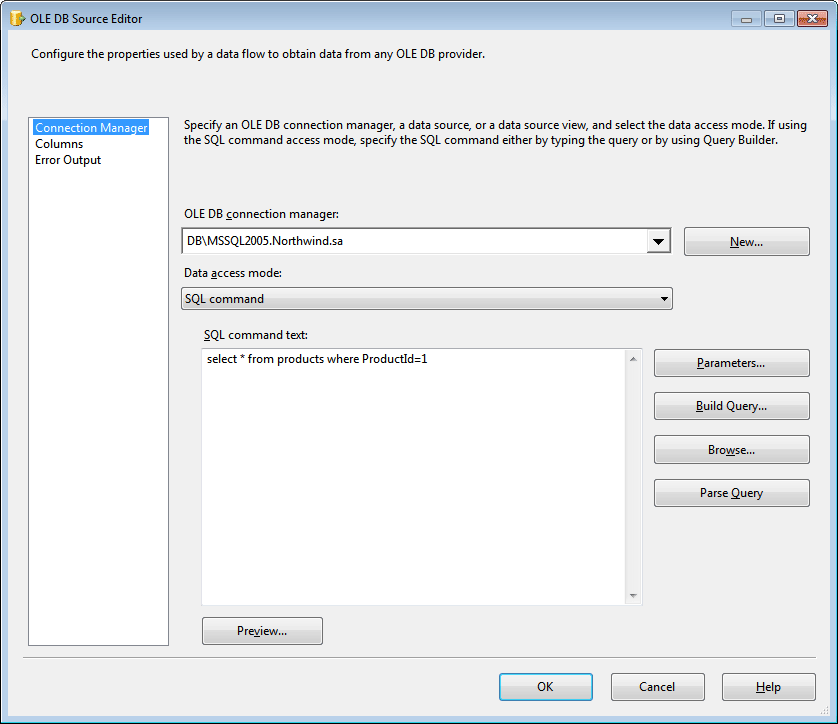
Specify the following settings in this tab:
- Select the required connection in the OLE DB connection manager drop-down list;
- Select the Data access mode, e.g. SQL command;
- Enter the required query in the SQL command text field.
Switch to the Columns tab.
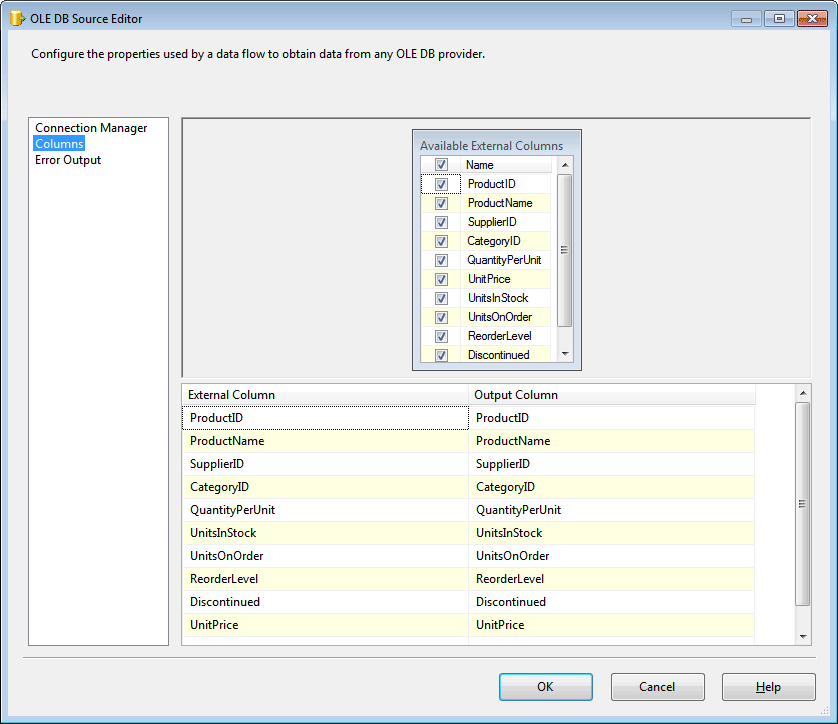
Configure the properties used by the data flow to obtain data from the OLE DB provider:
- Select the required columns in the Available External Columns box;
- Configure Output Column names, if necessary.
Switch to the Error Output tab.
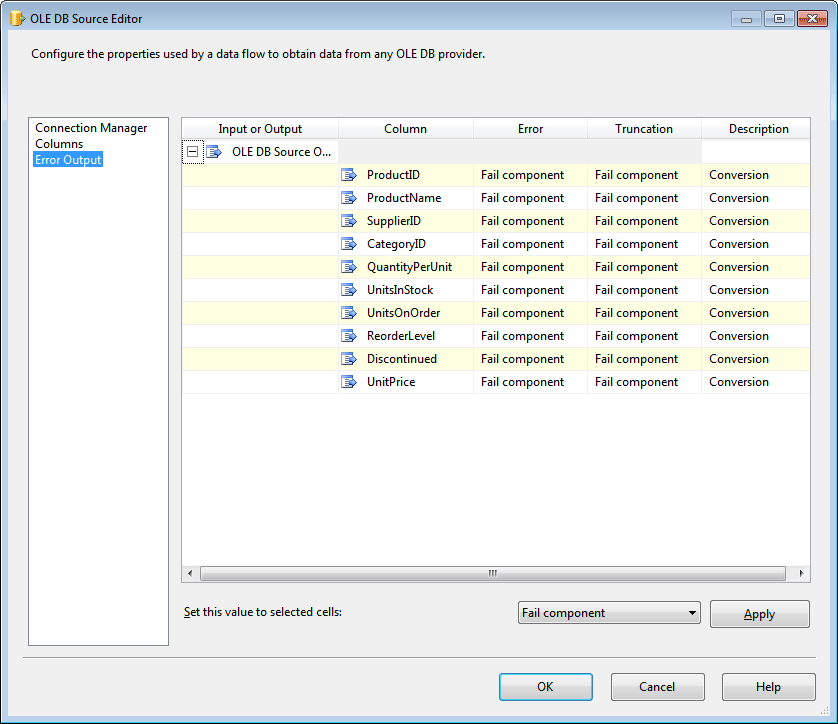
This tab allows you to specify in what way component failure should be treated; the following options are available: Fail component, Redirect row, Ignore failure.
After all options are set, click OK.
If all options are set correctly, the red marker on the data flow object disappears.

Proceed to customizing the Devart Salesforce Destination data flow object.
Double-click the Devart Salesforce Destination in the design area. The Connection Managers tab of the Advanced Editor for Devart Salesforce Destination dialog box is displayed.

Select the Devart Salesforce Connection Manager in the Connection Manager drop-down list and go to the Component Properties tab.
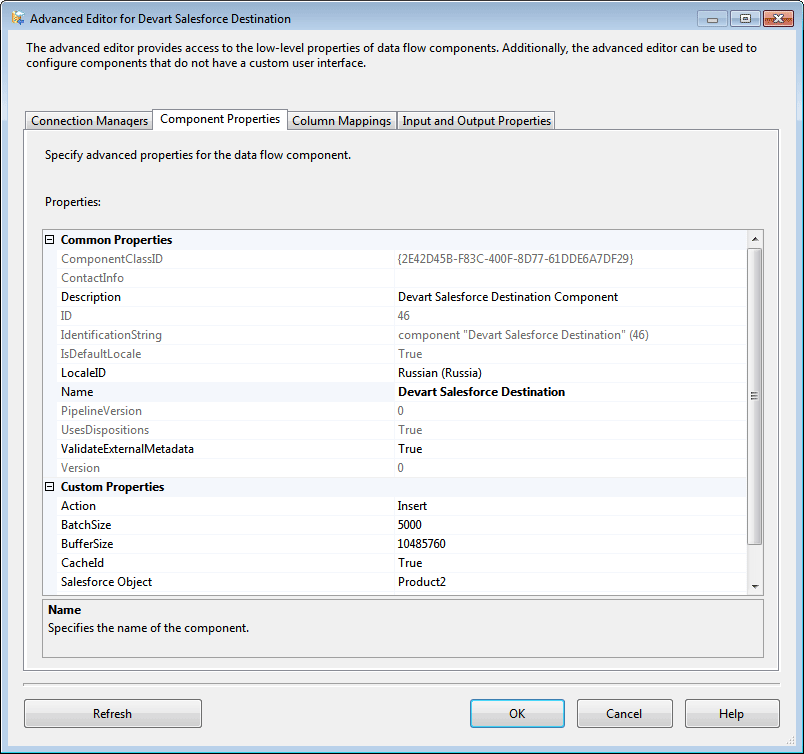
Here you can customize the data flow component properties. Pay attention to Salesforce-specific properties.
Go to the Column Mappings tab.

This tab displays mapping defined automatically by SSIS on the basis of the column name correspondence. If necessary, the default mapping can be changed in this tab according to your needs. For this, use the Input Column drop-down lists, or just draw connecting lines between the required column names.
After mapping is defined, switch to the following Input and Output Properties tab.
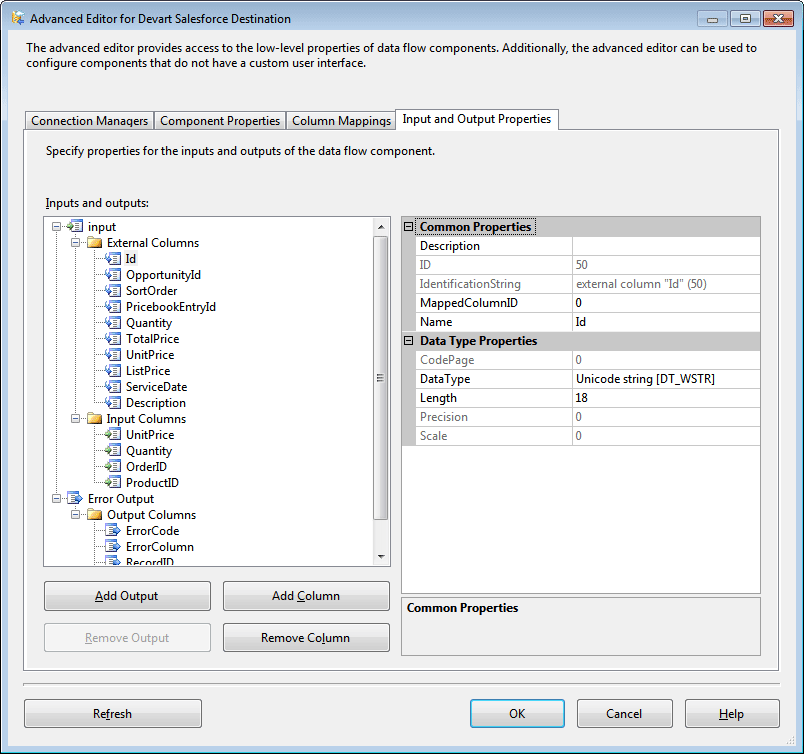
In this tab you can review input and output properties of the data flow component. Click OK.
Make sure that the red marker is absent on the Devart Salesforce Destination data flow object.
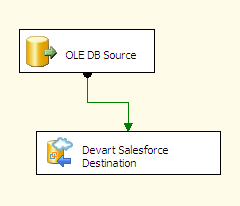
Right-click the design area and select Execute Task in the context menu. The green color of the data flow objects indicates that the data flow process is completed successfully:

See Also
Destination Overview | Loading Data to Salesforce | Loading Related Data